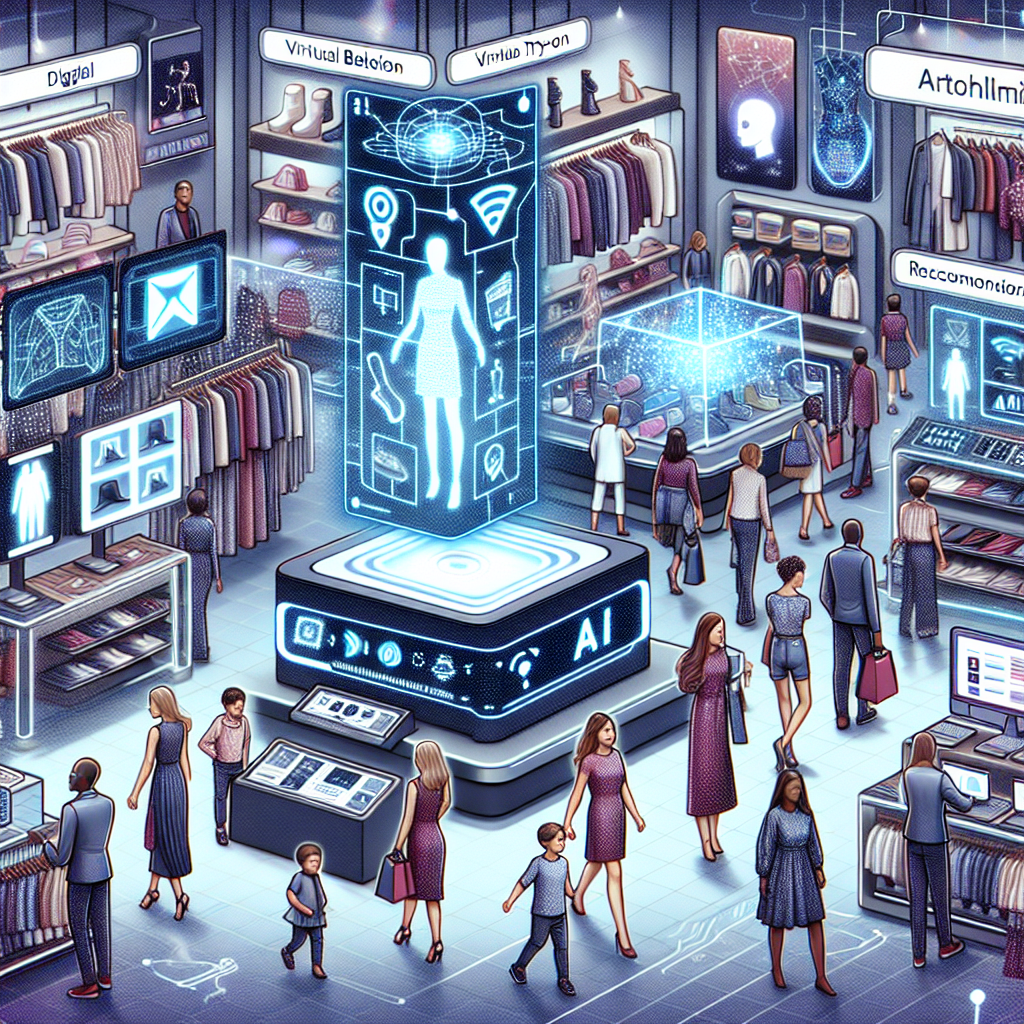Artificial Intelligence (AI) has revolutionized many industries, and the fashion industry is no exception. The impact of AI on fashion consumer behavior and shopping trends has been significant, leading to a more personalized and efficient shopping experience for consumers. From virtual try-on technology to personalized recommendations, AI has transformed the way people shop for fashion.
One of the key ways in which AI has affected fashion consumer behavior is through the use of virtual try-on technology. This technology allows consumers to try on clothes virtually, using their own body measurements and a computer-generated image of the garment. This not only saves time and reduces the need for physical try-ons in stores, but also helps consumers make more informed purchasing decisions.
Additionally, AI has enabled fashion retailers to provide personalized recommendations to consumers based on their preferences and browsing history. By analyzing data such as past purchases, search history, and social media interactions, AI algorithms can suggest products that are more likely to appeal to individual consumers. This level of personalization has been shown to increase customer engagement and loyalty, as well as drive sales.
Another way in which AI has impacted fashion consumer behavior is through the use of chatbots and virtual assistants. These AI-powered tools can provide customers with real-time assistance, answering questions, providing product recommendations, and even processing orders. This has made the shopping experience more convenient and efficient for consumers, leading to increased customer satisfaction and loyalty.
In addition to influencing consumer behavior, AI has also had a significant impact on shopping trends in the fashion industry. For example, AI-powered trend forecasting tools can analyze vast amounts of data from social media, fashion shows, and online retailers to predict future trends. This allows fashion brands to stay ahead of the curve and deliver products that are in line with current consumer preferences.
Furthermore, AI has enabled fashion brands to optimize their supply chain and inventory management processes. By analyzing data on sales trends, consumer preferences, and production costs, AI algorithms can help retailers make more informed decisions about which products to stock, how many to produce, and when to release new collections. This has led to reduced waste, improved efficiency, and increased profitability for fashion brands.
Overall, the impact of AI on fashion consumer behavior and shopping trends has been overwhelmingly positive. From virtual try-on technology to personalized recommendations and chatbots, AI has transformed the way people shop for fashion, making the experience more personalized, convenient, and efficient.
FAQs:
1. How does AI personalize the shopping experience for consumers?
AI personalizes the shopping experience for consumers by analyzing data such as past purchases, search history, and social media interactions to provide personalized recommendations. This helps consumers discover products that are more likely to appeal to their individual preferences.
2. How does virtual try-on technology work?
Virtual try-on technology uses computer-generated images of garments and the consumer’s body measurements to allow them to try on clothes virtually. This helps consumers make more informed purchasing decisions and reduces the need for physical try-ons in stores.
3. How do chatbots and virtual assistants enhance the shopping experience?
Chatbots and virtual assistants provide consumers with real-time assistance, answering questions, providing product recommendations, and processing orders. This makes the shopping experience more convenient and efficient for consumers, leading to increased customer satisfaction and loyalty.
4. How does AI impact fashion trends?
AI-powered trend forecasting tools analyze data from social media, fashion shows, and online retailers to predict future trends. This helps fashion brands stay ahead of the curve and deliver products that are in line with current consumer preferences.
5. How does AI optimize supply chain and inventory management processes in the fashion industry?
AI algorithms analyze data on sales trends, consumer preferences, and production costs to help fashion brands make more informed decisions about which products to stock, how many to produce, and when to release new collections. This leads to reduced waste, improved efficiency, and increased profitability for retailers.

